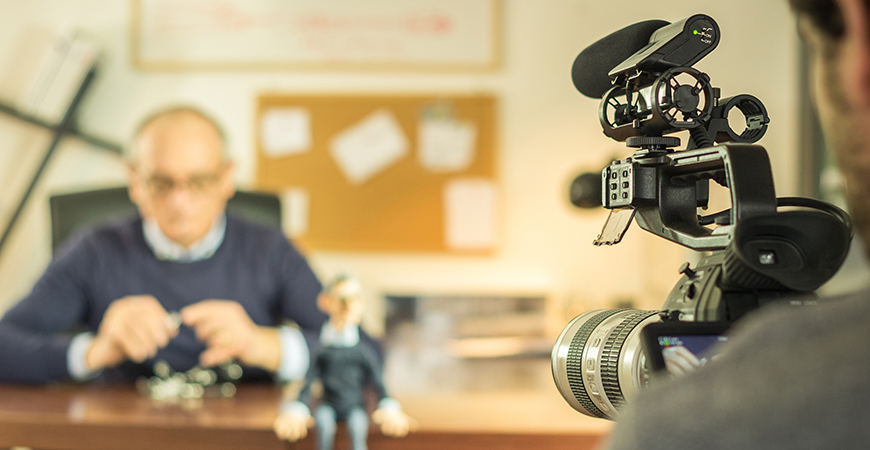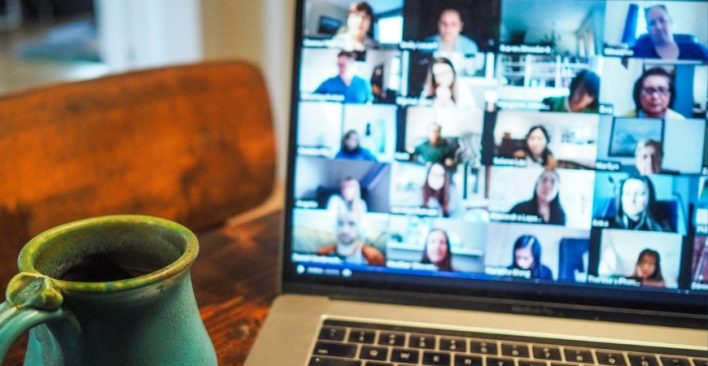How to Make an Effective Recruitment Video (Part 2)

In our first blog of this four-part series, we outlined four key early planning steps that need to be carefully considered when making a recruitment video. This second part covers a few more planning stages, plus what you need to know about the day of the shoot.
Planning the Day of the Shoot
 Locations
Locations
Choosing the right location for your video shoot is one of the most critical elements in the planning stages. Get it wrong and your footage may look or sound terrible, and it may also not fit your end objective.
Finding perfect locations is no easy feat. Check out the infographic on the right – it outlines everything you should look for in a location.
Recruitment videos differ from standard shoots in that there is often the need to shoot lots of people in a relatively short space of time, which means you need to work around the schedules and locations of the subjects (employees). Therefore, most shoots will need at least three moves during the day. Camera crews won’t like these frequent moves, but doing this will get you far better shots, so insist on it. If pushed, camera crews can pack down and back up within 30 minutes!
Cutaways, or shots of the surrounding area in normal speak, are absolutely crucial to get a good end result. They help to visualise the points being made by the subjects, can be used to hide cuts in the footage, and also give the video a feeling of pace or variety. Cutaways will generally not be filmed in the same space as the main footage, this is because they are normally of the work environment or outside, areas which can have bad audio and light. If time allows, it is best to scout the building and surrounding areas prior to the shoot, however this isn’t essential. On the day of the shoot, simply send one person out during breaks, and have them looking for areas which are suitable to film. For consistency, it’s great to have your interview subjects in the cutaways, but this isn’t always practical and again, it’s not essential.
You also need to be aware where you are filming, even within your own office building. For example, filming around sensitive data is not a good idea, likewise if you’re filming on private property. It’s always a good idea to seek permission to film before you set up any equipment.
 Utilising Employees
Utilising Employees
When creating a recruitment video your employees are one of your biggest assets. The content that they deliver is nearly always the most effective way to credibly showcase your company culture.
Some companies opt to use actors instead. This has its merits because the scripts are always delivered as planned and there is no risk of them leaving the business on bad terms, but in our experience these videos always appear a little fake and can be spotted a mile off.
Working with employees is a little like working with animals and children, you never quite know what they are going to do or say. However, it’s never live, so anything can be edited out.
When it comes to picking employees to feature, the best plan is to ask for volunteers from within the area of the business you wish to feature. Whoever you choose to use should be asked to sign a release waiver that stipulates their rights and what the footage will be used for.
Your employees will obviously be busy, and filming interviews can be a time-consuming process if not properly prepared for. You will want to minimise the amount of time the shoot will take by giving your staff time to plan their responses to the questions you’re going to ask prior to filming. This can be an effective method of saving time on the day of the shoot, and often results in more thought through answers, however it will more often than not, come across as scripted and contrived.
 Improvisation is a great way to ensure your video comes across as a genuine account of what it’s like to work there. Therefore, produce a set of questions that can be posed to the subjects on the day of the shoot. These questions should be pre-agreed by the stakeholders of the video. If you have the time, you can try and get footage of each question being answered by each employee to provide you with the greatest variation of recordings. However, whilst this isn’t essential, you do need to make sure you have enough footage before choosing to tailor your questions to each staff member.
Improvisation is a great way to ensure your video comes across as a genuine account of what it’s like to work there. Therefore, produce a set of questions that can be posed to the subjects on the day of the shoot. These questions should be pre-agreed by the stakeholders of the video. If you have the time, you can try and get footage of each question being answered by each employee to provide you with the greatest variation of recordings. However, whilst this isn’t essential, you do need to make sure you have enough footage before choosing to tailor your questions to each staff member.
You should request your subjects not to wear striped or checked clothing as the camera can’t differentiate the patterns and the finished product will have a moiré effect (in English: it looks bad). You can potentially limit this effect in post-production, but this is an extremely difficult and time consuming exercise.
 Crew
Crew
By this stage you should have your videography vendor selected, but you will also need some internal staff. It’s best practice to have the external Videographer (cameraman), a Director (either external or internal, but crucially they need to understand both recruitment and video), someone to ask the questions (unless you plan only to do shots to camera), someone to record the responses and potentially a runner (someone to do everything else, including grabbing lunch for the busy crew).
 Running Order
Running Order
The day of the shoot itself is obviously one of the busiest days of the entire production process. From timing to the locations, subjects and crew, you’ll have a lot to organise and prepare to make sure everything goes smoothly. A running order is the best tool to help you keep on top of all of this. Schedule a shot by shot list of what is going to happen on the day. It should contain all the information you feel necessary, including:
- Timings
- Locations
- Subjects (name, and crucially contact number)
- Crew (names and contact details)
- Location contacts (names and contact details)
Chances are you won’t stick to the running order perfectly, but without it your shoot risks quickly becoming a mess.
 Briefing & Setup
Briefing & Setup
An hour before you have scheduled to begin filming, get your crew in for a short briefing on what you expect from the day. This will go a long way, not only by clearing up any queries or questions that your crew has, but also any that you might have. This time will also allow your crew to set up the cameras, lighting and microphones, and perform video and sound checks, so that you are ready for when your subjects arrive. You should also use this time to find out when and how you will receive the footage from your camera operator. This can take several days unless planned carefully. If you feel your subjects may need to be briefed before the shoot begins, request that they come in early as well, but after your crew, to go through your running order for the day and, if you feel it’s necessary, your pre-prepared questions.
Summary
The production stage of a recruitment video can be an incredibly busy time. Although it will require a significant amount of organisation to make sure you stay on top of everything, being proactive during the planning stage will help ensure everything goes as smoothly as possible.
Our next blog will cover the actual shoot and the post-production stages of your recruitment video. We’ll discuss the pace of your video, music and sound and more.
In the meantime, if you would like more information on recruitment videos or any of the services we provide, feel free to contact us.
This article first appeared on Prominence Blog on March 18th, 2016.
Related articles
Leave a Reply
Sign up to our newsletter
Get a weekly digest on the latest in Talent Acquisition.
Deliver this goodness to my inbox!


